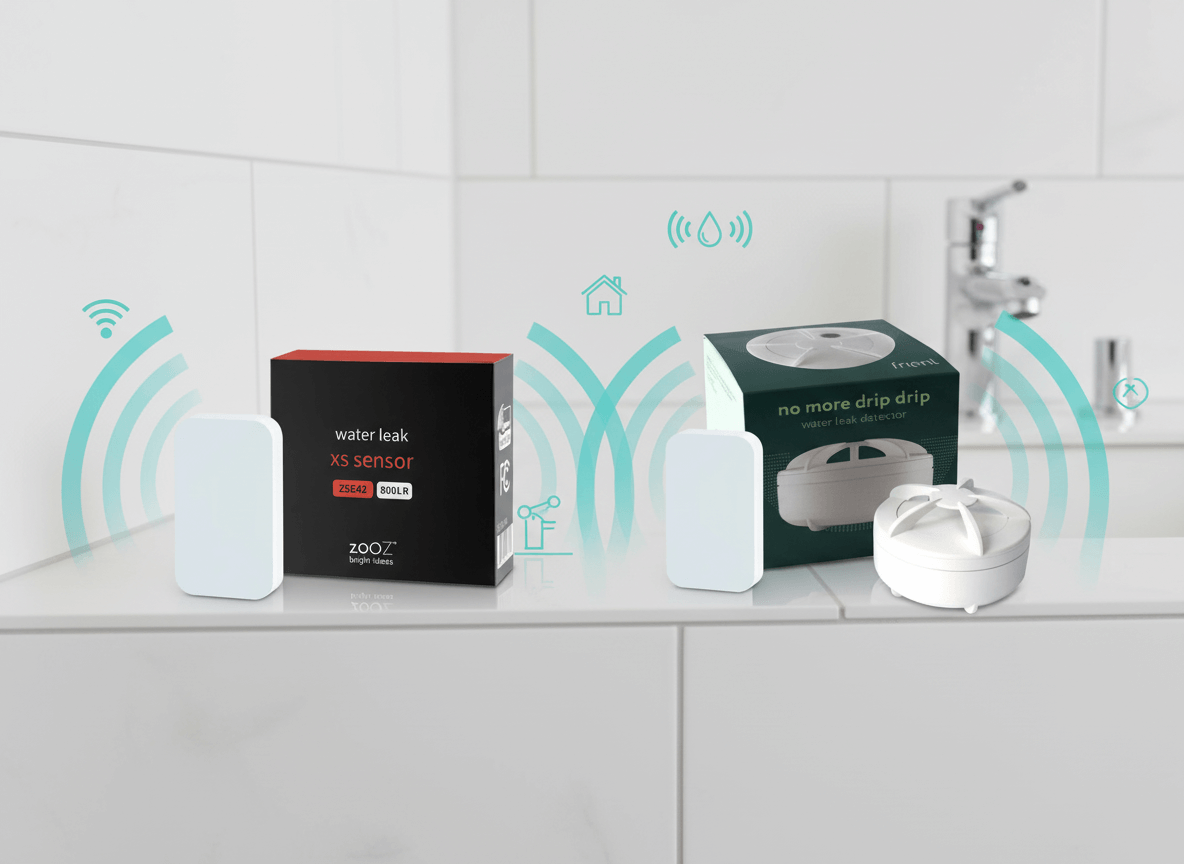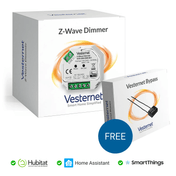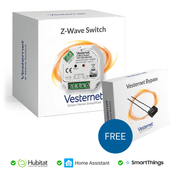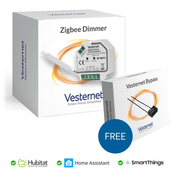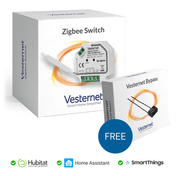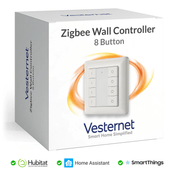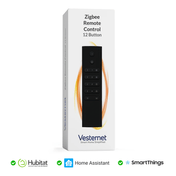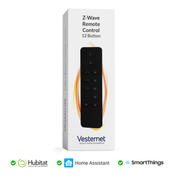Water damage costs UK homeowners thousands annually, with early detection becoming essential as smart home adoption grows and insurance requirements tighten. Whether it's a slow drip behind your washing machine or a burst pipe in the basement, a reliable smart leak detector can mean the difference between a minor inconvenience and a major disaster.
This comparison will help you choose between Z-Wave's extended range capabilities and Zigbee's mesh network reliability for optimal leak protection. We'll examine the ultra-thin Zooz XS Sensor against the probe-equipped Frient Water Detector, analysing their unique strengths for different smart home scenarios.
Vesternet's extensive experience with both Z-Wave and Zigbee ecosystems ensures unbiased technical insights for your smart home investment, helping you make an informed decision that protects your property effectively.

Ultra-Thin Z-Wave Protection: Inside the Zooz XS Sensor
The Zooz XS Sensor redefines discretion in water leak detection with its remarkable 0.3-inch profile. This ultra-thin design allows the smart leak detector to slip seamlessly under appliances, behind pipes, or beneath cabinets where traditional sensors simply won't fit.
Advanced Z-Wave Technology
- 800 Series Z-Wave chip delivers exceptional signal strength and reliability
- Impressive 1300ft range covers large properties without signal degradation
- Z-Wave Long Range technology maintains connection across multiple floors
- Direct hub communication reduces network congestion and improves response times
This water leak detector leverages the latest Z-Wave protocols to ensure your alerts reach you reliably, even in challenging wireless environments where other devices might struggle to maintain consistent connectivity.

Friendly Zigbee Guardian: Understanding the Frient Water Detector
The Frient Water Detector takes a different approach to leak protection, combining floor-based detection with an optional probe system for enhanced monitoring capabilities. Its distinctive design prioritises immediate local alerts alongside smart home integration.
Comprehensive Detection Features
- Built-in probe extends monitoring to hard-to-reach areas
- Loud local alarm provides instant on-site notification
- Zigbee mesh networking creates redundant communication paths
- Multiple placement options for flexible installation scenarios
This plumbing leak detector excels in situations where immediate local awareness matters as much as remote notifications, making it particularly valuable for occupied properties where quick response is crucial.
Protocol Wars: Z-Wave Long Range vs Zigbee Mesh Networks
Understanding the fundamental differences between these wireless protocols helps explain why each pipe leak detector performs differently in various smart home environments. Z-Wave operates on a dedicated frequency band, whilst Zigbee shares spectrum with WiFi and other devices.
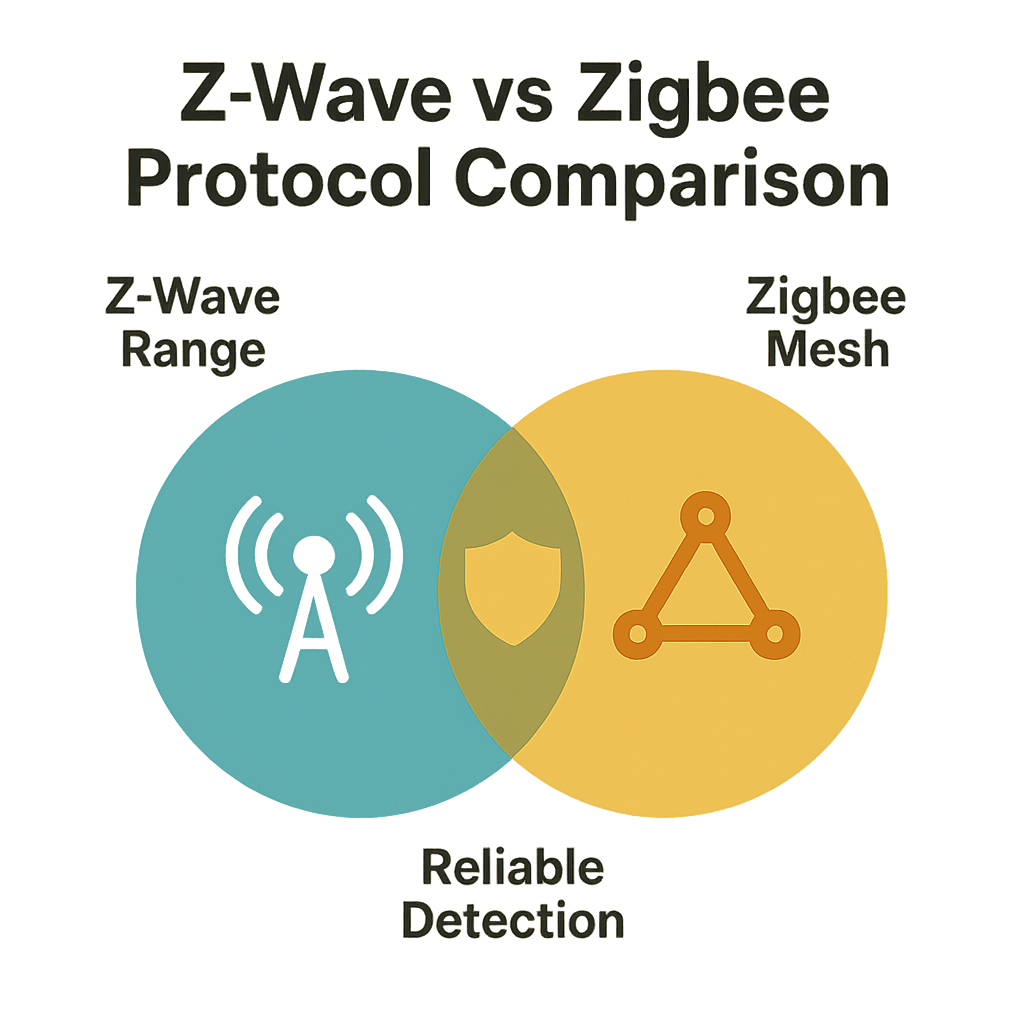
Z-Wave Protocol Advantages
- Dedicated 868MHz frequency reduces interference from other devices
- Direct hub communication eliminates mesh routing delays
- Standardised command classes ensure consistent device behaviour
- Lower device density prevents network congestion issues
Z-Wave's approach prioritises reliability and range over network flexibility. Each device maintains a direct relationship with your hub, creating predictable communication patterns that work particularly well for critical sensors like water leak detectors.
Zigbee Mesh Network Benefits
- Self-healing mesh networks route around failed devices automatically
- Multiple communication paths increase overall system resilience
- Device interoperability across different manufacturers
- Network expansion improves coverage and reliability
Zigbee's mesh architecture creates redundant pathways for your smart leak detector communications. If one device fails, the network automatically finds alternative routes, potentially offering superior long-term reliability in complex installations.
Hub requirements differ significantly between protocols. Z-Wave devices typically require dedicated Z-Wave controllers, whilst Zigbee sensors often work with broader smart home platforms. This affects both initial setup complexity and future expansion possibilities for your leak detection system.
Real-World Reliability: Detection Speed and Alert Performance
Detection sensitivity varies between these water leak detector technologies based on their physical design and sensing mechanisms. The Zooz XS Sensor uses contact-based detection across its ultra-thin profile, whilst the Frient detector combines base unit sensing with probe monitoring capabilities.
Performance Comparison Factors
- Response time from water contact to first alert notification
- Battery life expectations under normal operating conditions
- False positive rates in high-humidity environments
- Signal reliability during peak network usage periods
Battery performance significantly impacts long-term reliability for any smart leak detector. Z-Wave's lower power requirements typically extend battery life compared to Zigbee devices, though actual performance depends on usage patterns and network conditions.
Alert Delivery Analysis
Network congestion affects notification delivery differently across protocols. Z-Wave's dedicated frequency band maintains consistent performance, whilst Zigbee networks may experience delays during heavy WiFi usage periods. However, Zigbee's mesh redundancy can compensate for individual device failures that might isolate Z-Wave sensors.
Local alarm capabilities provide immediate notification regardless of network status. The Frient detector's integrated alarm ensures you're alerted even if smart home connectivity fails, whilst the Zooz sensor relies entirely on hub-mediated notifications for alert delivery.
Zooz XS Sensor: Strengths and Limitations
The ultra-thin design represents this water leak detector's greatest strength, enabling installations impossible with conventional sensors. Its 0.3-inch profile allows placement behind appliances, under low-clearance pipes, or within tight cabinet spaces where water damage often begins unnoticed.
Key Advantages
- Discretion allows monitoring without visible sensor placement
- Exceptional wireless range covers large properties reliably
- Z-Wave protocol stability reduces false alerts and missed notifications
- Simple installation requires no wiring or complex mounting procedures
Notable Limitations
Z-Wave ecosystem restrictions mean this plumbing leak detector works only with compatible hubs, potentially limiting integration options. Setup complexity may challenge beginners unfamiliar with Z-Wave pairing procedures, and the lack of local alarm means you depend entirely on hub connectivity for immediate alerts.
The sensor's flat design, whilst advantageous for discrete placement, may miss water pooling in certain configurations where vertical sensors might prove more effective at detecting initial leak conditions.
Frient Water Detector: Advantages and Drawbacks
The probe system sets this pipe leak detector apart, extending monitoring capabilities beyond the base unit's immediate vicinity. This flexibility proves valuable for monitoring washing machine connections, boiler areas, or other locations where direct sensor placement isn't practical.
Primary Benefits
- Local alarm provides immediate notification without network dependency
- Probe flexibility enables monitoring in challenging locations
- Zigbee mesh networking offers communication redundancy
- Multiple hub compatibility supports various smart home platforms
Potential Drawbacks
Hub dependency means this smart leak detector requires compatible Zigbee controllers for full functionality, and not all features work across every platform. The larger form factor may prove less suitable for ultra-discrete installations compared to ultra-thin alternatives.
Mesh network performance depends on other Zigbee devices creating reliable communication paths, which may prove challenging in sparse networks or interference-heavy environments where dedicated protocols might perform more consistently.
Perfect Match: Which Sensor Suits Your Smart Home Setup
Choosing between these water leak detector options depends on your existing smart home infrastructure, installation requirements, and monitoring preferences. Each sensor serves different user scenarios most effectively.
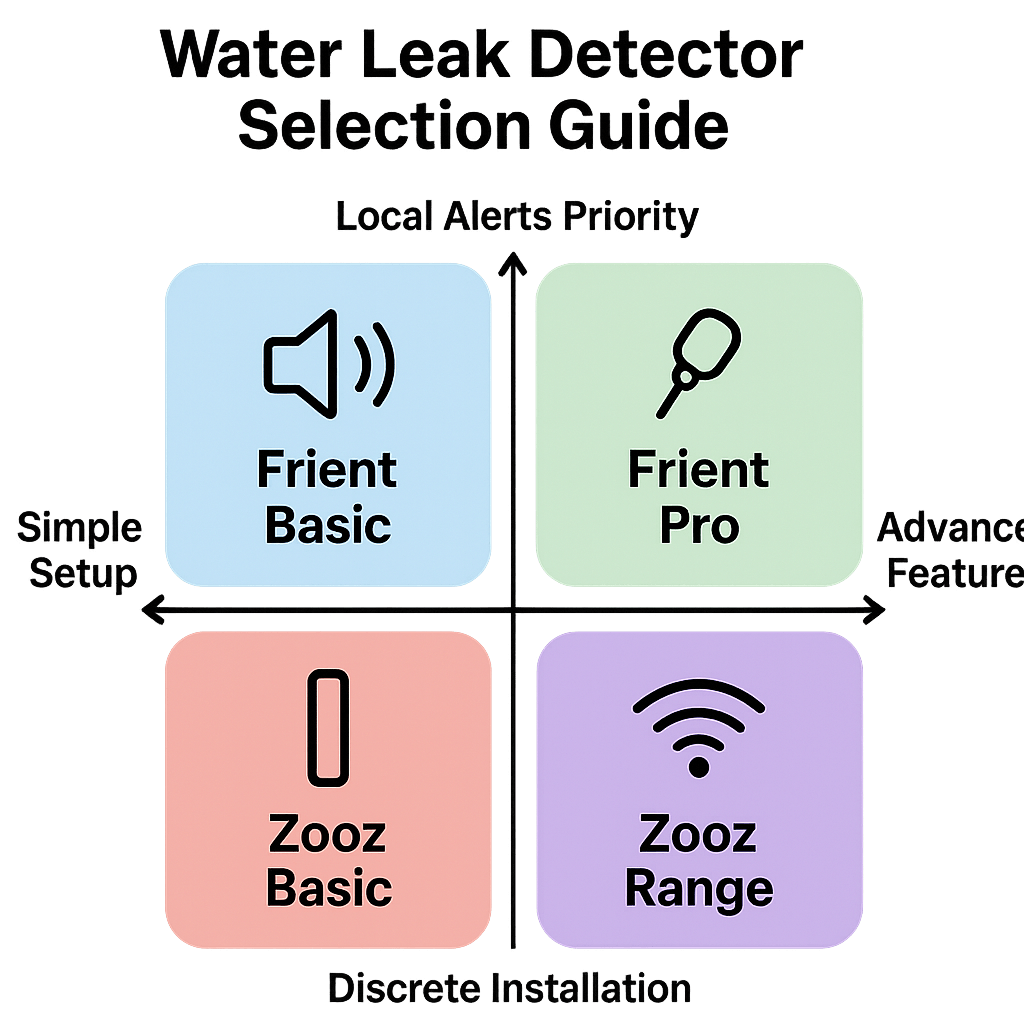
Ideal Zooz XS Sensor Scenarios
- Existing Z-Wave ecosystems seeking discrete leak monitoring
- Large properties requiring extensive wireless range coverage
- Hidden installations behind appliances or within tight spaces
- Users prioritising minimal visual impact over local alarm features
The Zooz sensor excels where discretion and range matter most. Its ultra-thin profile makes it ideal for monitoring expensive appliances or hidden plumbing without affecting aesthetics, whilst Z-Wave's superior range handles challenging installations across multiple floors or outbuildings.
Optimal Frient Detector Applications
- Zigbee-based smart homes seeking comprehensive leak protection
- Situations requiring immediate local notification capabilities
- Complex monitoring needs benefiting from probe flexibility
- Properties where mesh network redundancy improves reliability
This plumbing leak detector suits scenarios where immediate awareness matters as much as remote monitoring. The local alarm ensures household members know about leaks instantly, whilst the probe system handles awkward monitoring locations effectively.
User Type Considerations
Tech beginners often prefer the Frient detector's straightforward functionality and immediate local feedback, whilst automation enthusiasts may favour the Zooz sensor's discrete integration capabilities. Renters benefit from both devices' simple installation requirements, though protocol compatibility with existing systems remains the primary deciding factor.
Making Your Choice: Protection That Fits Your Needs
Both sensors excel at water leak detection but serve different smart home ecosystems and user preferences. The Zooz XS Sensor offers unmatched discretion and Z-Wave Long Range reliability, while the Frient detector provides flexible probe detection and immediate local alerts.
Key Decision Factors
- Existing smart home protocol compatibility requirements
- Installation space constraints and aesthetic preferences
- Local alarm needs versus discrete monitoring priorities
- Network range requirements and interference challenges
Your ideal choice depends on your existing smart home protocol, installation requirements, and automation preferences. Consider which features matter most to your specific situation - ultra-thin design, extended range, local alarms, or probe flexibility.
Both the Zooz XS Sensor and Frient Water Detector offer proven leak protection with distinct advantages for different scenarios. Take time to explore both options and their compatibility with your smart home setup to make an informed decision that protects your property effectively.

